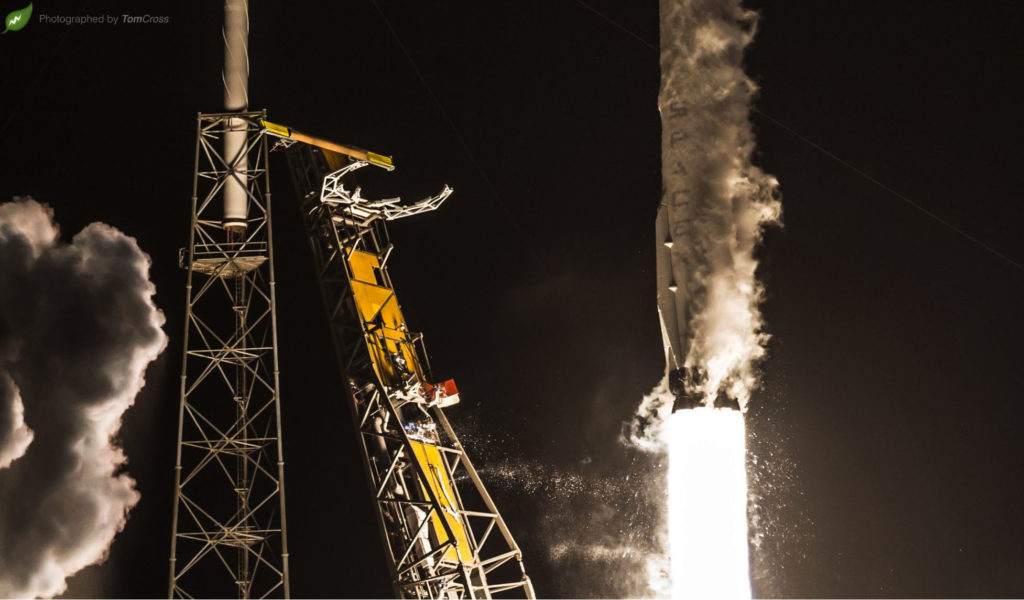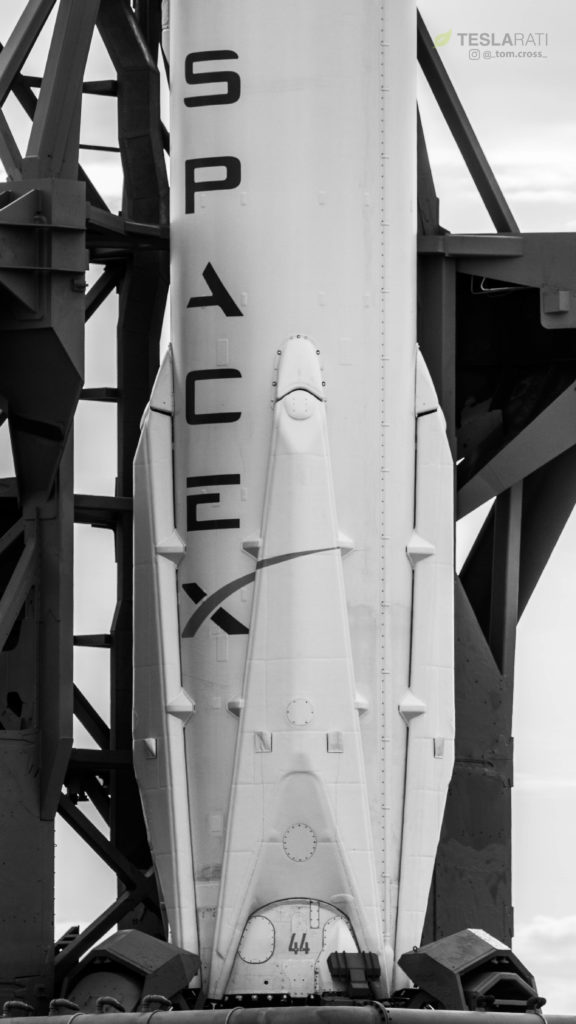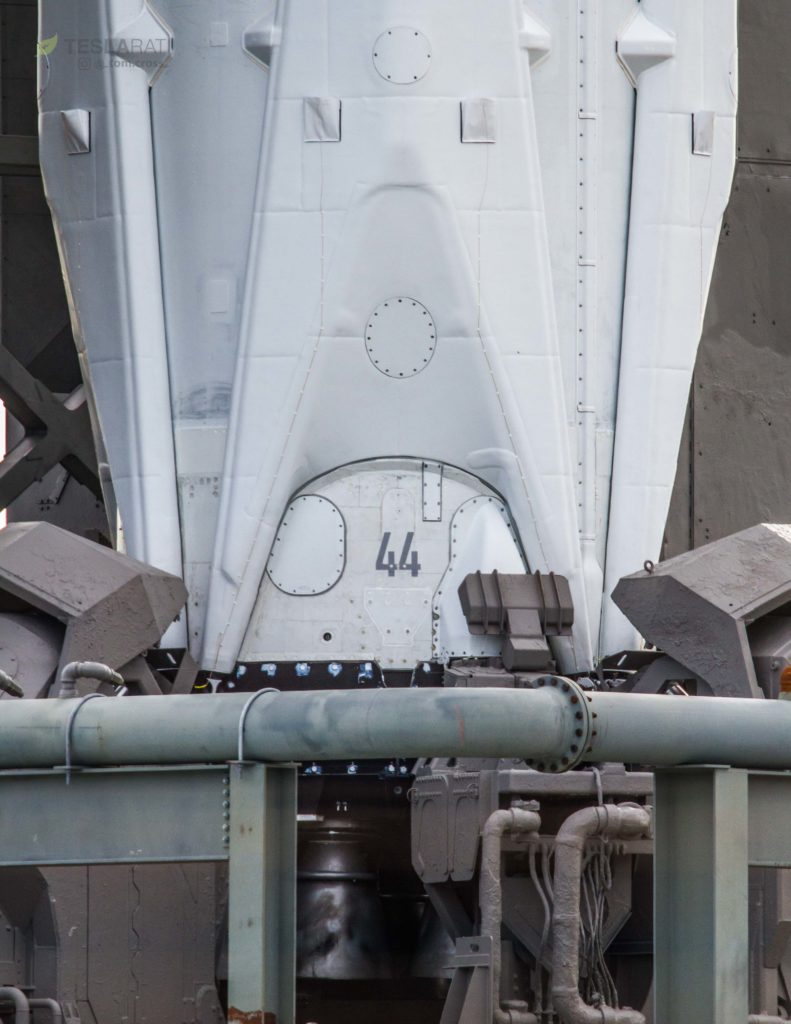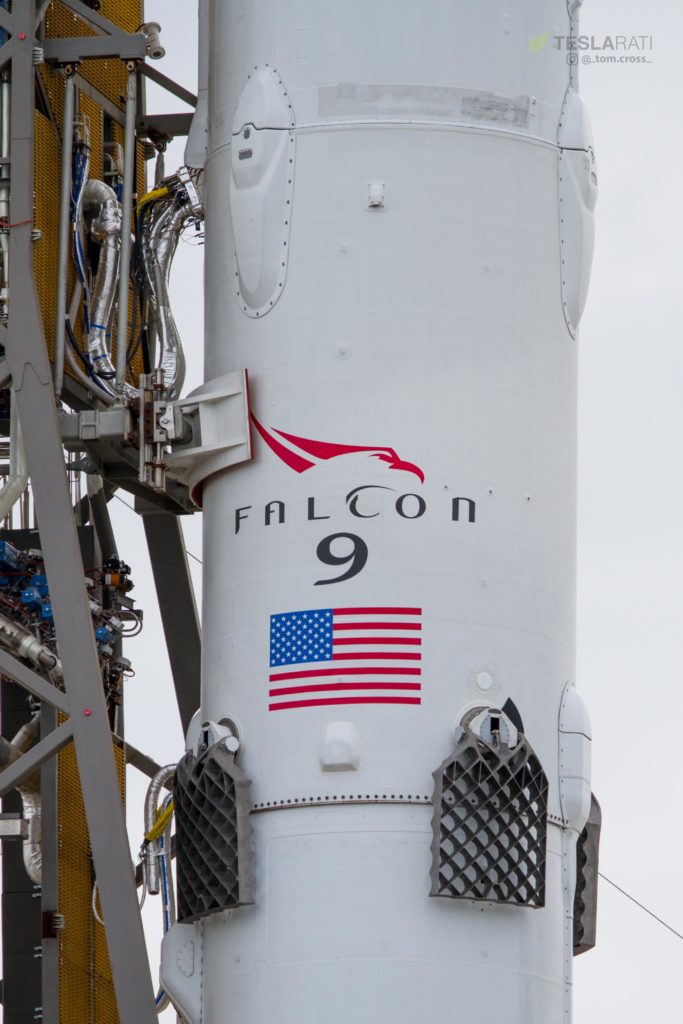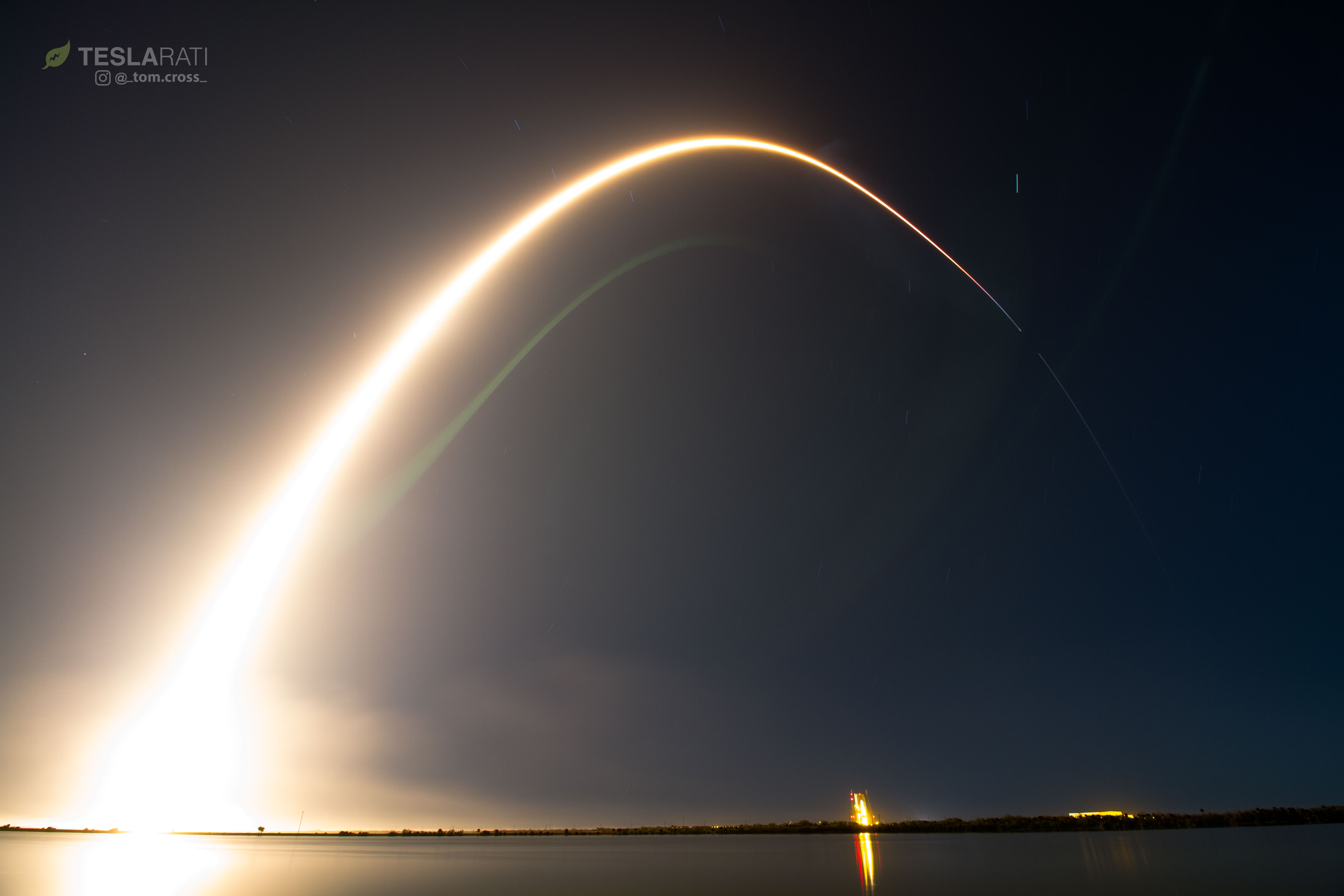

News
SpaceX tests extra-fast ocean landing, celebrates 50th launch
The happy tragedy of 1044
SpaceX has successfully completed the 50th launch of Falcon 9 a bit less than eight years after its 2010 debut, and has done so in a fashion that almost perfectly captures the veritable tsunamis the company has begun to make throughout the global aerospace industry. After a duo of delays due to hardware issues and range conflicts, this evening’s launch successfully placed Hispasat 30W-6 into a geostationary transfer orbit (GTO), where the massive ~6100 kilogram communications satellite will now spend several months raising its orbit to around 36,000 km (22,000 miles) above Earth’s surface.
Falcon 9 flight 50 launches tonight, carrying Hispasat for Spain. At 6 metric tons and almost the size of a city bus, it will be the largest geostationary satellite we’ve ever flown.
— Elon Musk (@elonmusk) March 5, 2018
Aside from becoming the heaviest commsat the company has yet to launch into GTO, the mission’s anticipated landing attempt stirred up quite a bit of intrigue and uncertainty in the spaceflight fan community. Stormy Atlantic seas, partially connected to the chaotic weather recently seen on the East coast, proved to be far too dangerous for SpaceX’s eastern recovery fleet and its drone ship, OCISLY, and they returned to Port Canaveral around 48 hours ago, under the watchful eyes of many anxious SpaceX followers. Tragically, this means that the brand new Falcon 9 booster (B1044) – originally expected to attempt perhaps the most difficult landing yet – had to be expended. Although the booster went through its paces as if it were preparing to land, it found no drone ship beneath it once it reached sea level, and subsequently dunked into the stormy Atlantic seas.
However, due to the last-minute nature of SpaceX and Hispasat’s decision to expend the booster rather than delay for better recovery conditions, launch technicians at Pad 40 simply did not have time to remove the rocket’s iconic landing legs and valuable titanium grid fins – the first time their titanium iteration has been chosen for a Falcon 9 to resist extreme reentry heating. Due to massive swells, recovery of even pieces of the expended booster – theoretically following a soft landing – will not be possible, as no SpaceX recovery vessels remained at the planned point of touchdown 400 miles off the Florida coast. Notably, following the successful inaugural flight of Falcon Heavy, CEO Elon Musk stated that upgraded titanium grid fins were “super expensive” and unequivocally “the most important thing to recover.” SpaceX’s decision to expend Falcon 9 B1044 without even sparing the time to remove the booster’s recovery hardware and titanium fins demonstrates just how focused the company is on its customers’ needs. In the case of geostationary communications satellites like Hispasat 30W-6, launch delays on the order of a few days can cause millions of dollars of financial harm to the parent company – each day a satellite spends on the ground orbit is also a day with no revenue generation, a less-than-thrilling proposition to shareholders.
- Falcon 9 1044 lifts off for its first and last time in a breathtaking display of power. (Tom Cross)
- Falcon 9 1044 vertical at Pad 40 around 72 hours before launch. (Tom Cross)
- Booster 1044 displays its number one last time. (Tom Cross)
- RIP B1044’s titanium grid fins. May they make a happy little reef at the bottom of the ocean. (Tom Cross)
B1044 sadly lost any hope at a second flight, but the data SpaceX gathered from its uniquely fast reentry and attempted soft-landing will hopefully pave the way for the recovery of Falcon 9 and Heavy boosters after all but the heaviest satellite launches. GovSat-1, a launch that saw its flight-proven booster famously survive a similarly hot landing in the ocean, was the first largely successful test of this new and experimental method of more efficiently recovering Falcons. By igniting three of its nine Merlin 1D engines instead of the usual single engine while landing, Falcon boosters can theoretically reduce the amount of fuel needed to safely land, fuel savings that can then be used to push its payloads higher and faster. However, the downsides of this approach are several. With three times as many engines igniting at landing, the margin of error for a successful landing becomes downright miniscule – the tiniest of problems with ignition, throttle control, or guidance could cause the rocket to smash into the drone ship at considerable speed. Additionally, triple the landing thrust would subject the booster to as much as 10Gs of acceleration (10 times the force of Earth’s gravity), forces that would almost instantaneously cause the average human (and even specially trained fighter pilots) to black out.
This rocket was meant to test very high retrothrust landing in water so it didn’t hurt the droneship, but amazingly it has survived. We will try to tow it back to shore. pic.twitter.com/hipmgdnq16
— Elon Musk (@elonmusk) January 31, 2018
Regardless of 1044’s untimely demise, another successful mission for SpaceX is purely positive. Happy customers make for a happy company, and SpaceX has achieved an incredible consistency of success in the last year alone. The loss of a new, potentially-reusable Falcon 9 booster is sad, but it only serves to foreshadow the imminent introduction of Falcon 9 Block 5, an upgrade hoped to realize Elon Musk’s decade-old dream of rockets that can be reused as many as 10 times with minimal refurbishment, and 100 times with maintenance. That debut could occur as early as April, just a month away.
https://twitter.com/_TomCross_/status/970900892005359617
Follow us for live updates, behind-the-scenes sneak peeks, and a sea of beautiful photos from our East and West coast photographers.
Teslarati – Instagram – Twitter
Tom Cross – Twitter
Pauline Acalin – Twitter
Eric Ralph – Twitter
News
Tesla cleared in Canada EV rebate investigation
Tesla has been cleared in an investigation into the company’s staggering number of EV rebate claims in Canada in January.
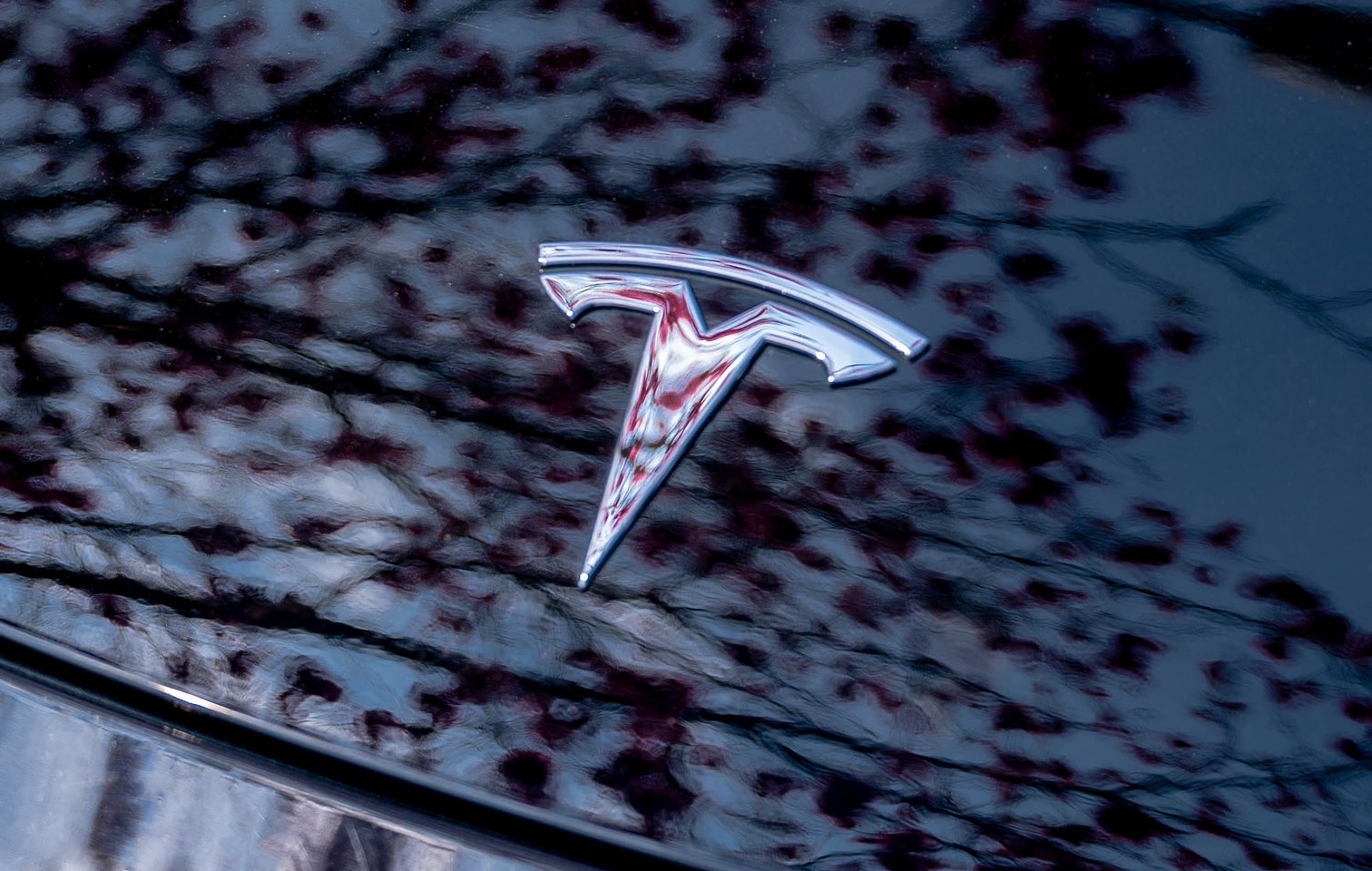
Canadian officials have cleared Tesla following an investigation into a large number of claims submitted to the country’s electric vehicle (EV) rebates earlier this year.
Transport Canada has ruled that there was no evidence of fraud after Tesla submitted 8,653 EV rebate claims for the country’s Incentives for Zero-Emission Vehicles (iZEV) program, as detailed in a report on Friday from The Globe and Mail. Despite the huge number of claims, Canadian authorities have found that the figure represented vehicles that had been delivered prior to the submission deadline for the program.
According to Transport Minister Chrystia Freeland, the claims “were determined to legitimately represent cars sold before January 12,” which was the final day for OEMs to submit these claims before the government suspended the program.
Upon initial reporting of the Tesla claims submitted in January, it was estimated that they were valued at around $43 million. In March, Freeland and Transport Canada opened the investigation into Tesla, noting that they would be freezing the rebate payments until the claims were found to be valid.
READ MORE ON ELECTRIC VEHICLES: EVs getting cleaner more quickly than expected in Europe: study
Huw Williams, Canadian Automobile Dealers Association Public Affairs Director, accepted the results of the investigation, while also questioning how Tesla knew to submit the claims that weekend, just before the program ran out.
“I think there’s a larger question as to how Tesla knew to run those through on that weekend,” Williams said. “It doesn’t appear to me that we have an investigation into any communication between Transport Canada and Tesla, between officials who may have shared information inappropriately.”
Tesla sales have been down in Canada for the first half of this year, amidst turmoil between the country and the Trump administration’s tariffs. Although Elon Musk has since stepped back from his role with the administration, a number of companies and officials in Canada were calling for a boycott of Tesla’s vehicles earlier this year, due in part to his association with Trump.
News
Tesla Semis to get 18 new Megachargers at this PepsiCo plant
PepsiCo is set to add more Tesla Semi Megachargers, this time at a facility in North Carolina.

Tesla partner PepsiCo is set to build new Semi charging stations at one of its manufacturing sites, as revealed in new permitting plans shared this week.
On Friday, Tesla charging station scout MarcoRP shared plans on X for 18 Semi Megacharging stalls at PepsiCo’s facility in Charlotte, North Carolina, coming as the latest update plans for the company’s increasingly electrified fleet. The stalls are set to be built side by side, along with three Tesla Megapack grid-scale battery systems.
The plans also note the faster charging speeds for the chargers, which can charge the Class 8 Semi at speeds of up to 1MW. Tesla says that the speed can charge the Semi back to roughly 70 percent in around 30 minutes.
You can see the site plans for the PepsiCo North Carolina Megacharger below.
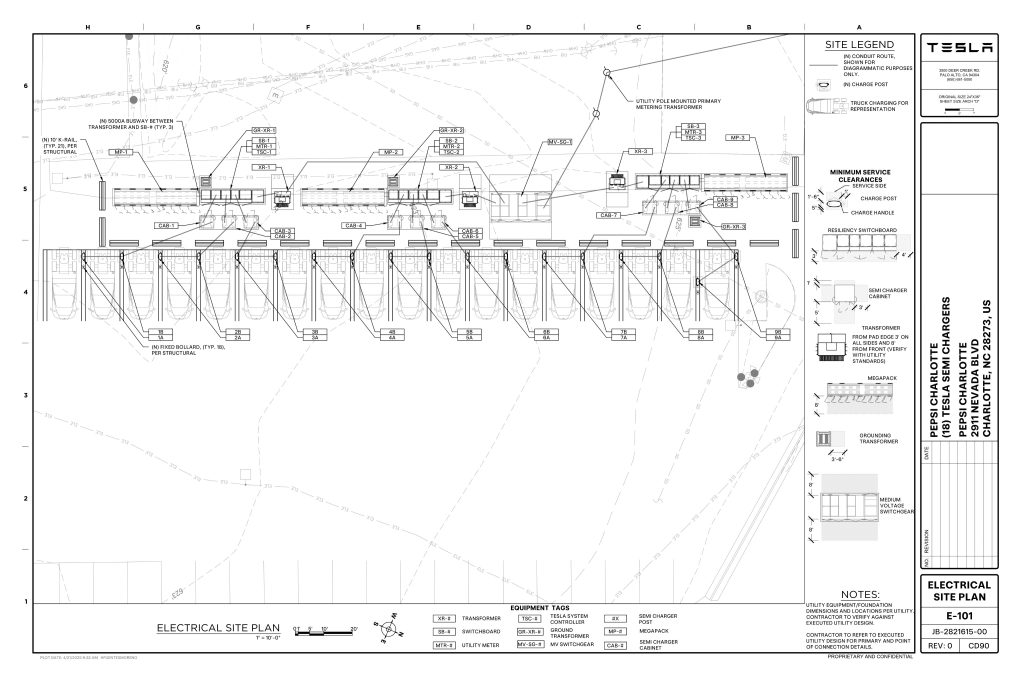
Credit: PepsiCo (via MarcoRPi1 on X)
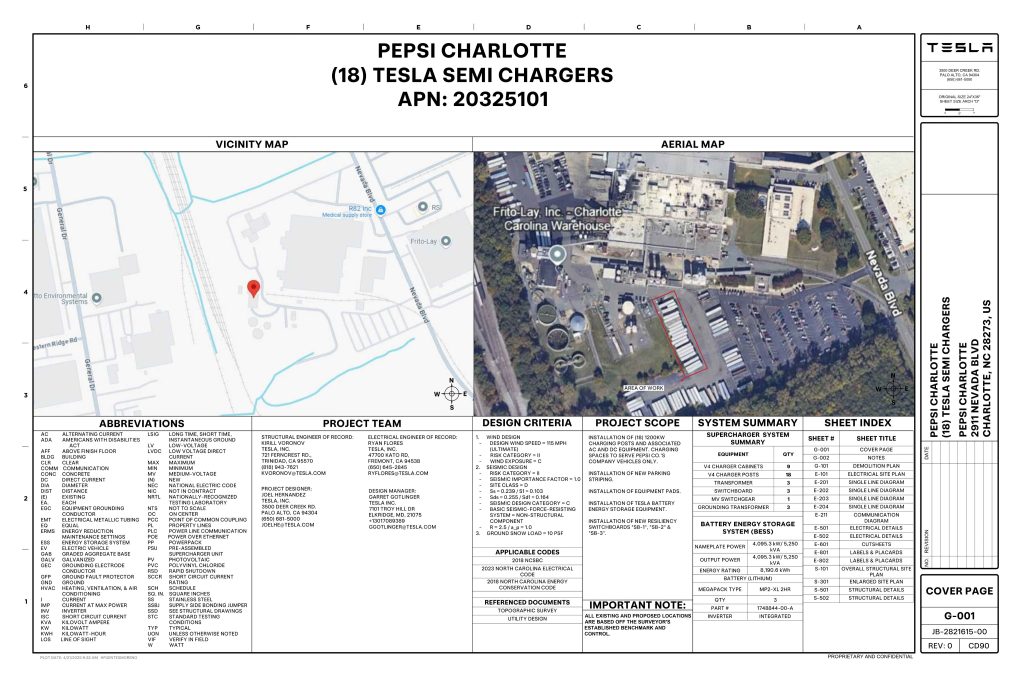
Credit: PepsiCo (via MarcoRPi1 on X)
READ MORE ON THE TESLA SEMI: Tesla to build Semi Megacharger station in Southern California
PepsiCo’s Tesla Semi fleet, other Megachargers, and initial tests and deliveries
PepsiCo was the first external customer to take delivery of Tesla’s Semis back in 2023, starting with just an initial order of 15. Since then, the company has continued to expand the fleet, recently taking delivery of an additional 50 units in California. The PepsiCo fleet was up to around 86 units as of last year, according to statements from Semi Senior Manager Dan Priestley.
Additionally, the company has similar Megachargers at its facilities in Modesto, Sacramento, and Fresno, California, and Tesla also submitted plans for approval to build 12 new Megacharging stalls in Los Angeles County.
Over the past couple of years, Tesla has also been delivering the electric Class 8 units to a number of other companies for pilot programs, and Priestley shared some results from PepsiCo’s initial Semi tests last year. Notably, the executive spoke with a handful of PepsiCo workers who said they really liked the Semi and wouldn’t plan on going back to diesel trucks.
The company is also nearing completion of a higher-volume Semi plant at its Gigafactory in Nevada, which is expected to eventually have an annual production capacity of 50,000 Semi units.
Tesla executive teases plan to further electrify supply chain
News
Tesla sales soar in Norway with new Model Y leading the charge
Tesla recorded a 54% year-over-year jump in new vehicle registrations in June.
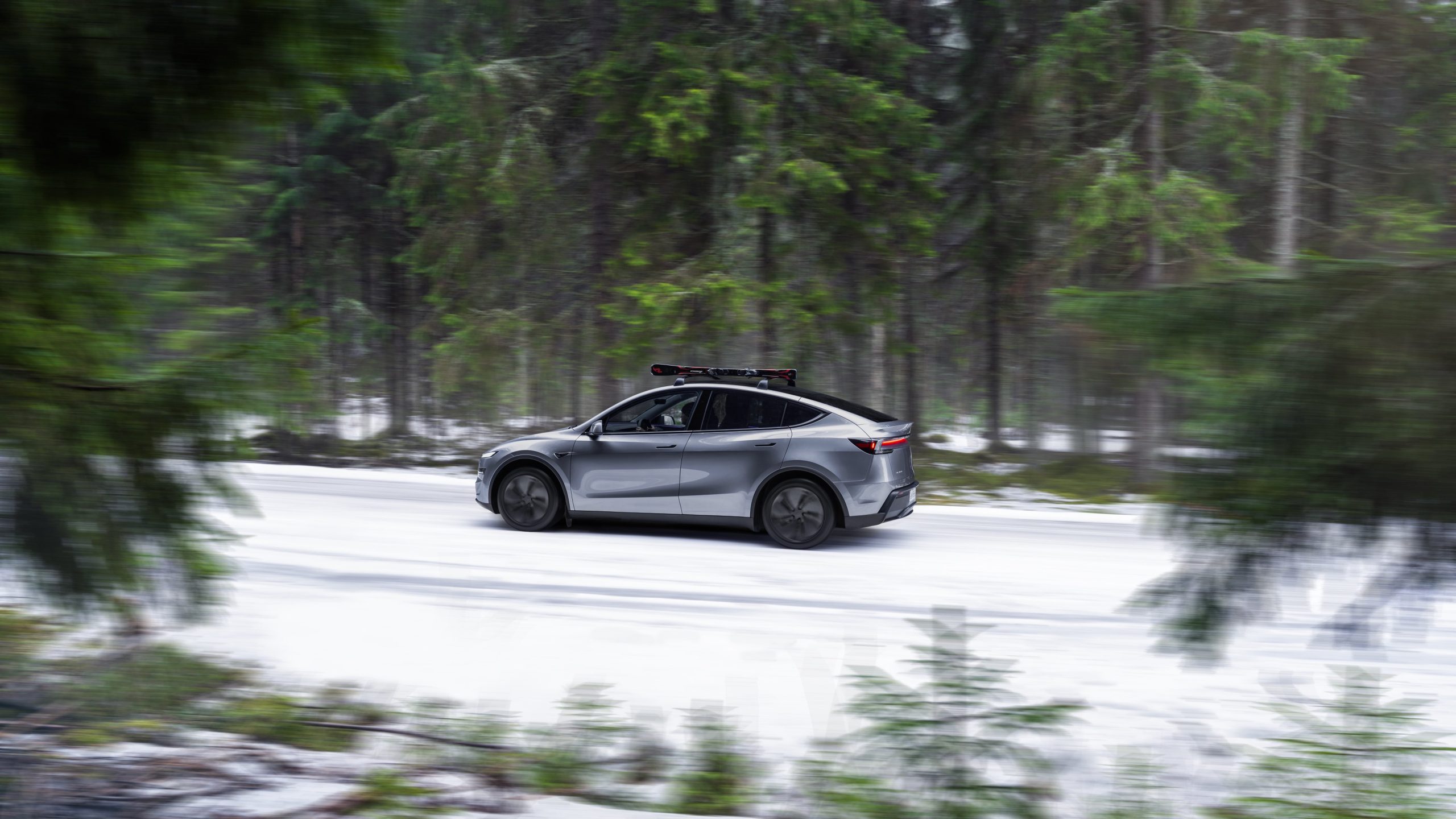
Tesla is seeing strong momentum in Norway, with sales of the new Model Y helping the company maintain dominance in one of the world’s most electric vehicle-friendly markets.
Model Y upgrades and consumer preferences
According to the Norwegian Road Federation (OFV), Tesla recorded a 54% year-over-year jump in new vehicle registrations in June. The Model Y led the charge, posting a 115% increase compared to the same period last year. Tesla Norway’s growth was even more notable in May, with sales surging a whopping 213%, as noted in a CNBC report.
Christina Bu, secretary general of the Norwegian EV Association (NEVA), stated that Tesla’s strong market performance was partly due to the updated Model Y, which is really just a good car, period.
“I think it just has to do with the fact that they deliver a car which has quite a lot of value for money and is what Norwegians need. What Norwegians need, a large luggage space, all wheel drive, and a tow hitch, high ground clearance as well. In addition, quite good digital solutions which people have gotten used to, and also a charging network,” she said.
Tesla in Europe
Tesla’s success in Norway is supported by long-standing government incentives for EV adoption, including exemptions from VAT, road toll discounts, and access to bus lanes. Public and home charging infrastructure is also widely available, making the EV ownership experience in the country very convenient.
Tesla’s performance in Europe is still a mixed bag, with markets like Germany and France still seeing declines in recent months. In areas such as Norway, Spain, and Portugal, however, Tesla’s new car registrations are rising. Spain’s sales rose 61% and Portugal’s sales rose 7% last month. This suggests that regional demand may be stabilizing or rebounding in pockets of Europe.
-

 Elon Musk2 weeks ago
Elon Musk2 weeks agoTesla investors will be shocked by Jim Cramer’s latest assessment
-

 Elon Musk2 days ago
Elon Musk2 days agoxAI launches Grok 4 with new $300/month SuperGrok Heavy subscription
-

 Elon Musk4 days ago
Elon Musk4 days agoElon Musk confirms Grok 4 launch on July 9 with livestream event
-

 News1 week ago
News1 week agoTesla Model 3 ranks as the safest new car in Europe for 2025, per Euro NCAP tests
-

 Elon Musk2 weeks ago
Elon Musk2 weeks agoA Tesla just delivered itself to a customer autonomously, Elon Musk confirms
-

 Elon Musk1 week ago
Elon Musk1 week agoxAI’s Memphis data center receives air permit despite community criticism
-

 News2 weeks ago
News2 weeks agoXiaomi CEO congratulates Tesla on first FSD delivery: “We have to continue learning!”
-

 News2 weeks ago
News2 weeks agoTesla sees explosive sales growth in UK, Spain, and Netherlands in June

